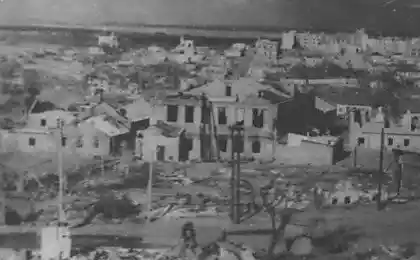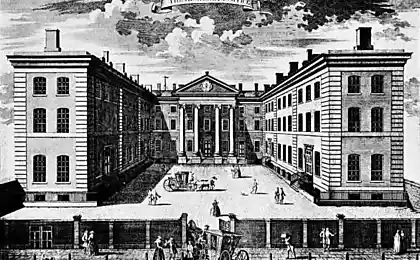761
The ruins of the German church in the Odessa region
Brawn (now the village. Limanskoe) - German colony of Odessa district of Kherson province, with Kuchurgan estuary. Residents of about 600; Roman Catholic Church, the German schools, community Cash Markets 2 weeks, shops. Center homemade baskets for the needs of the Black Sea ports; significant production of vans. (Collegiate Dictionary FA Brockhaus and IA Efron)
01

Erected in 1764 guardsmen to the throne, the young Catherine of Anhalt-Zerbst (Great, it would be later ...) I could not forget his well-groomed German life. It is like that in Russia, which she fell in love with love is not ostentatious, began, as they say, cultural shifts. To the peasants learned to work as her homeland and the country became rich in the extent of their spaces. As soon as everything calmed down after the coup, sent a manifesto to Europe:
"Everyone is permitted to enter and Our Empire to settle where one wishes, in all our provinces."
And another next year. And a year later, another.
She realized that life in the Russian hinterland (namely there should start the conversion) is hard non-Russian man. But the moment was very much appropriate. In Prussia and Austria had just silenced guns Seven Years' War - around homeless, ruined, fire victims ... go, no doubt, go!
And indeed gone.
Especially since the Empress ordered to give to those who will record in its list of "the caller" - an authorized agent from eight shillings. Every day, eight! Money whopping librarian Koenigsberg castle Immanuel Kant received in those years, 24 shillings a day ...
She promised (and more importantly, kept its word) to those who will travel in uninhabited places, for thirty years, exempt from all taxes. FREE gave each family 30 dessiatines * of land: 15 - arable, 5 - wood, 5 - pastures, 5 - under the building and the floor. And on the horse, and one big family - so even two. Cow, flour, grain, seeds, plows, carts, rope, shovel, and so on. And 500 rubles "lifting" of money. And duty-free trade but fair allowed to organize.
Just come, but the Russians have learned to work diligently and correctly!
The first caravan of settlers went to where the smell of the sea: the ports of Lübeck and Danzig (now Gdansk). The ships sailed to St. Petersburg. And past the magnificent palaces on foot through the old capital of Moscow. Pylyat carts paced weary Germans: the eco-path ... In Moscow, the German settlement. Really End? Not yet, again loaded - again sail.
In the southern lands of the Russian Empire, the German colonists began arriving in the early 19th century. The settlement was called dear to their names in Stuttgart, Karlsruhe, Manngaym, Selz, Strasburg, Tighe, Tigenhagen, Altonau, Lichtenau, Basel, Darmstadt ... Near Odessa, Bessarabia and South Caucasus established a colony of 181.
02

On June 10, 1908. took a solemn celebration on the occasion of the 100th anniversary of the existence of the German settlements in the Kherson province. The celebration was centered in the village of Seelze. Extensive program of anniversary celebrations. (According to the newspaper "Odessa" from 07.06.1908g.)
03

And under the tsarist regime and the Bolshevik regime German settlers experienced periods of prosperity and periods of persecution.
04
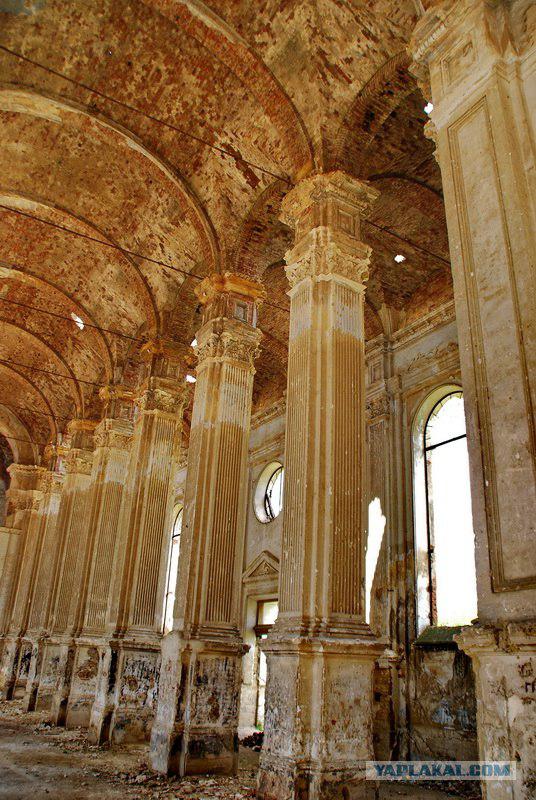
From July 21 to August 13, 1919 the Odessa county shook powerful uprising of German colonists who opposed the surplus and the mobilization of the Red Army, for the transfer of power to the Constituent Assembly. It was prepared by the Central Union of German colonists of the Black Sea. The center of the uprising - "Defence Council" - was in prison Gros Libental, rebel detachments were created in Mannheim, Baden, Seelze, Strasbourg, Cadenet. At the same time, in areas Belyaevka, Balta, Tiligul-Berezovsky estuary uprising erupted Ukrainian and Russian peasants, the uprising was supported by Bulgarian colonists sat Tatarka, Bulgarka, Akkarzha, Severinovka, Buyalyk. In late July, the rebels captured Ovidiopol, Odessa threatened approached her at a distance of 7 km. The Bolsheviks had mobilized all the forces in the battle 1-6 August uprising was crushed. Merciless red terror was directed against German colonists, in some villages were shot every fifth man. Chairman of the Defence Council of Odessa I. Klimenko recalled that "... the elimination was the most radical, the property of all those who participated in the revolt, confiscated».
05

In 1924 on the territory of the Ukrainian SSR formed five German national regions: Luxembourg (Donetsk lips.) Landausky, Zeltssky (center - to. Headcheeses (Brawn), Odessa Province.), And Molochansk Prishibsky (Ekaterinoslav lips.). In February 1938, in accordance with the Resolution of the Political Bureau of the Communist Party (Bolsheviks) of Ukraine "On the reorganization of the national regions and village councils of the Ukrainian SSR in the usual areas and village councils" were eliminated Spartak, Karl Libknehtovsky, Zeltssky, Luxembourg, Molochansk, Roth-Frontovsky Fritz-Gekkertovsky German national regions, as well as other national administrative units. During the creation of new administrative-territorial units of the national zoning system in Ukraine has been eliminated.
06

During World War II, 304 residents of Brawn Liman fought the enemy at the front, 109 of them were killed in the fighting. During the occupation, the Nazis waged a brutal massacre of the villagers, tortured and killed more than 250 activists, among them the deputy of the Supreme Soviet of the USSR I. Kurtz, chairman of the kolkhoz IG Richter, his wife and six children, the foreman of the kolkhoz I. Tulmana and his family, teacher RA Doyberi, a member of the Communist Party from 1924 MI Martison. When, after much torture. Martison brought to the area and told to repent publicly that she was German, "betrayed commissioners" courageous woman threw in the face of the Nazis: "You - the Nazis, I hate you, like all honest people. You will be destroyed! Long live Soviet power! »
07

About the German colony with. Brawn - Limanskoe resemble the remains of the Lutheran Church. Kirch makes an indelible impression. From it's not much left, but it feels grandeur. Find it simply. It stands on the side of the road Kuchurgan - Belyaevka almost in the center of town. Limanskoe. The road from Belyaevka in Limanskoe picturesque, but somewhat involved, and part of the road just before Limansky not asvaltirovan. Better to go up to. Kuchurgan on the route Odessa Chisinau, well, or Chisinau - Odessa. In p. Kuchurgan turn left at the sign on Belyaevka (if you go from Odessa) and 10 km. - Village. Limanskoe.
08
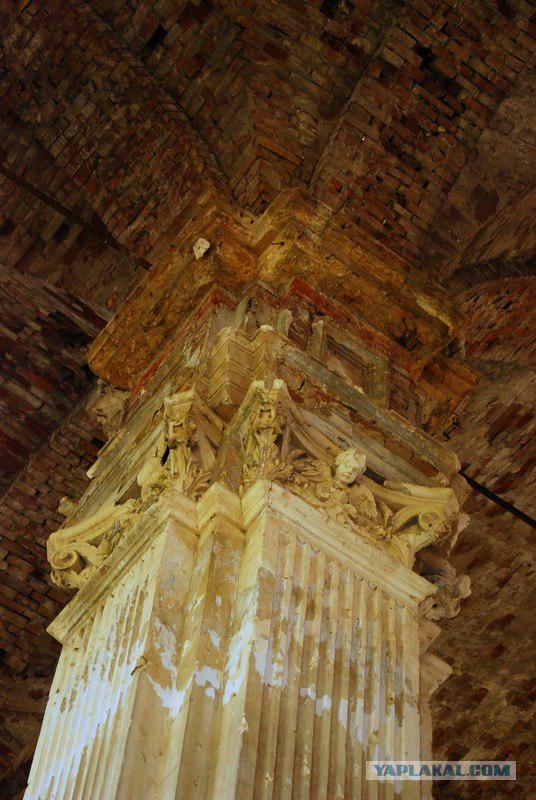
09
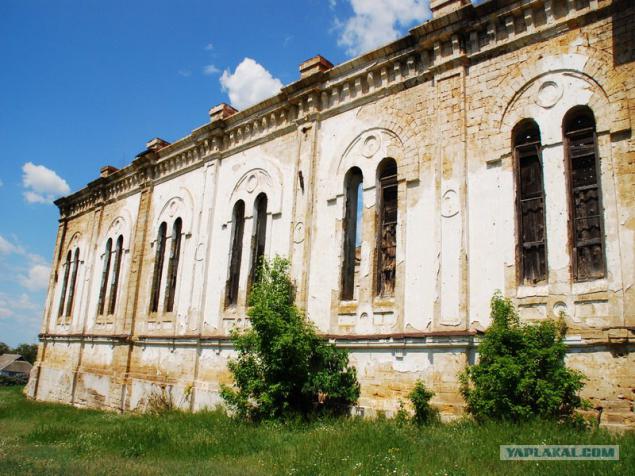
10

11

12

13

14

15

16

17

18
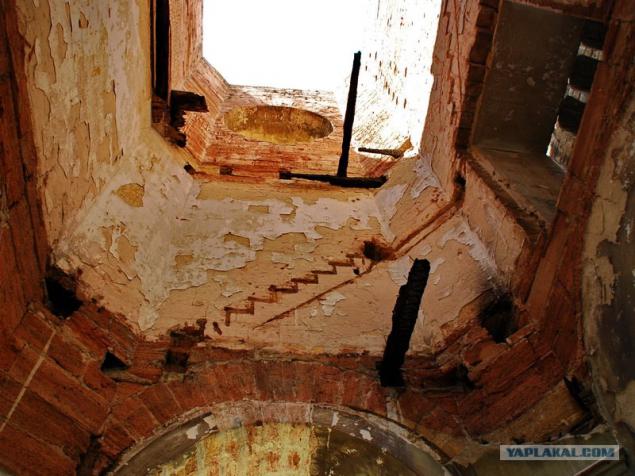
19
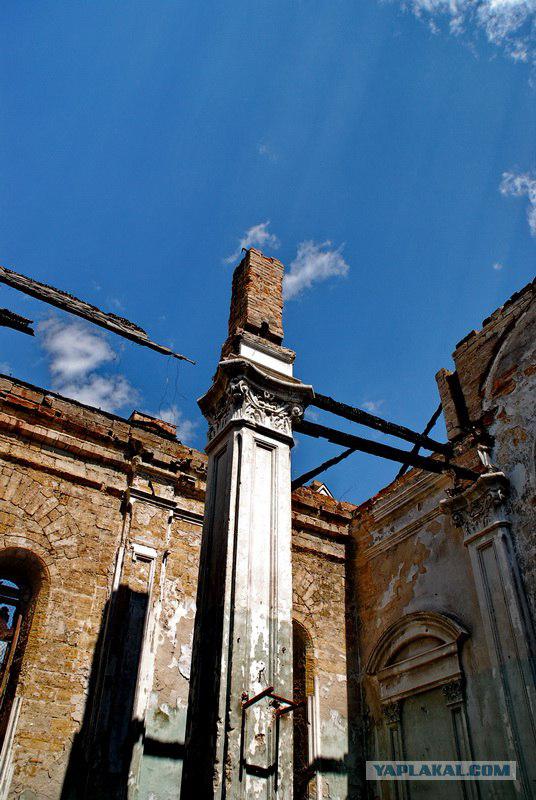
20

21

22
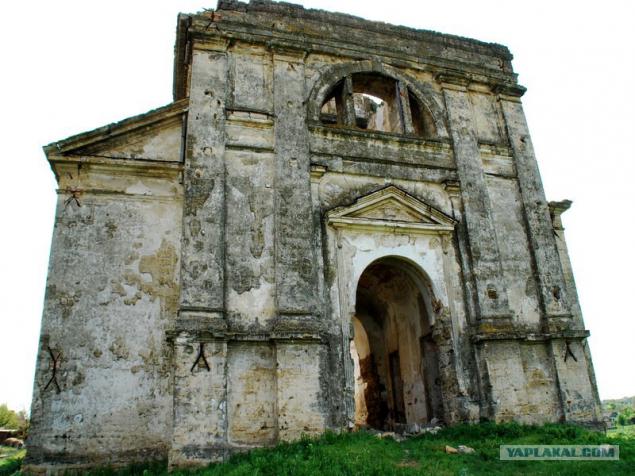
23

24

25

26

27

28
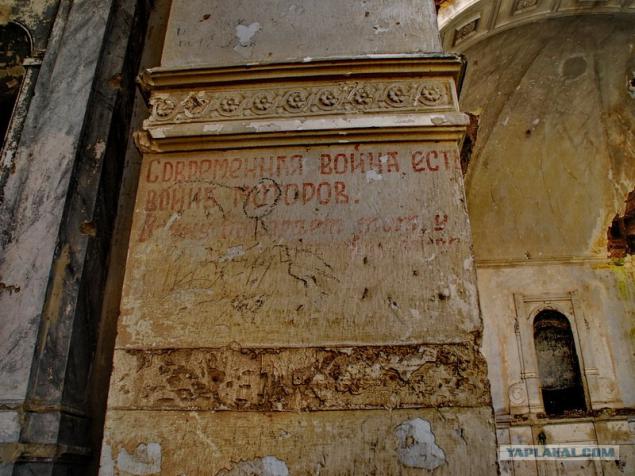
29
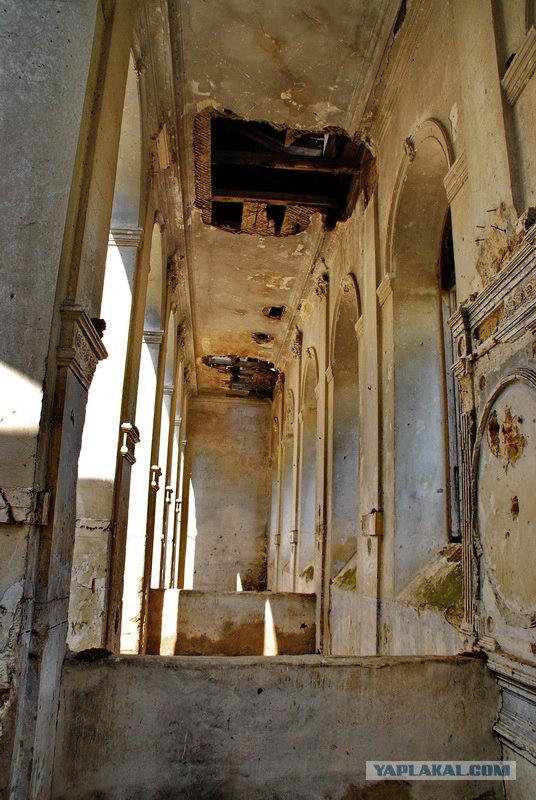
30
Dobavleno1 in [mergetime] 1260825869 [/ mergetime]
Thank you, comrades! I hope it was interesting and pleasant.

Th-then I think there will be more fans of historical zabroshek)
Source:
01

Erected in 1764 guardsmen to the throne, the young Catherine of Anhalt-Zerbst (Great, it would be later ...) I could not forget his well-groomed German life. It is like that in Russia, which she fell in love with love is not ostentatious, began, as they say, cultural shifts. To the peasants learned to work as her homeland and the country became rich in the extent of their spaces. As soon as everything calmed down after the coup, sent a manifesto to Europe:
"Everyone is permitted to enter and Our Empire to settle where one wishes, in all our provinces."
And another next year. And a year later, another.
She realized that life in the Russian hinterland (namely there should start the conversion) is hard non-Russian man. But the moment was very much appropriate. In Prussia and Austria had just silenced guns Seven Years' War - around homeless, ruined, fire victims ... go, no doubt, go!
And indeed gone.
Especially since the Empress ordered to give to those who will record in its list of "the caller" - an authorized agent from eight shillings. Every day, eight! Money whopping librarian Koenigsberg castle Immanuel Kant received in those years, 24 shillings a day ...
She promised (and more importantly, kept its word) to those who will travel in uninhabited places, for thirty years, exempt from all taxes. FREE gave each family 30 dessiatines * of land: 15 - arable, 5 - wood, 5 - pastures, 5 - under the building and the floor. And on the horse, and one big family - so even two. Cow, flour, grain, seeds, plows, carts, rope, shovel, and so on. And 500 rubles "lifting" of money. And duty-free trade but fair allowed to organize.
Just come, but the Russians have learned to work diligently and correctly!
The first caravan of settlers went to where the smell of the sea: the ports of Lübeck and Danzig (now Gdansk). The ships sailed to St. Petersburg. And past the magnificent palaces on foot through the old capital of Moscow. Pylyat carts paced weary Germans: the eco-path ... In Moscow, the German settlement. Really End? Not yet, again loaded - again sail.
In the southern lands of the Russian Empire, the German colonists began arriving in the early 19th century. The settlement was called dear to their names in Stuttgart, Karlsruhe, Manngaym, Selz, Strasburg, Tighe, Tigenhagen, Altonau, Lichtenau, Basel, Darmstadt ... Near Odessa, Bessarabia and South Caucasus established a colony of 181.
02

On June 10, 1908. took a solemn celebration on the occasion of the 100th anniversary of the existence of the German settlements in the Kherson province. The celebration was centered in the village of Seelze. Extensive program of anniversary celebrations. (According to the newspaper "Odessa" from 07.06.1908g.)
03

And under the tsarist regime and the Bolshevik regime German settlers experienced periods of prosperity and periods of persecution.
04

From July 21 to August 13, 1919 the Odessa county shook powerful uprising of German colonists who opposed the surplus and the mobilization of the Red Army, for the transfer of power to the Constituent Assembly. It was prepared by the Central Union of German colonists of the Black Sea. The center of the uprising - "Defence Council" - was in prison Gros Libental, rebel detachments were created in Mannheim, Baden, Seelze, Strasbourg, Cadenet. At the same time, in areas Belyaevka, Balta, Tiligul-Berezovsky estuary uprising erupted Ukrainian and Russian peasants, the uprising was supported by Bulgarian colonists sat Tatarka, Bulgarka, Akkarzha, Severinovka, Buyalyk. In late July, the rebels captured Ovidiopol, Odessa threatened approached her at a distance of 7 km. The Bolsheviks had mobilized all the forces in the battle 1-6 August uprising was crushed. Merciless red terror was directed against German colonists, in some villages were shot every fifth man. Chairman of the Defence Council of Odessa I. Klimenko recalled that "... the elimination was the most radical, the property of all those who participated in the revolt, confiscated».
05

In 1924 on the territory of the Ukrainian SSR formed five German national regions: Luxembourg (Donetsk lips.) Landausky, Zeltssky (center - to. Headcheeses (Brawn), Odessa Province.), And Molochansk Prishibsky (Ekaterinoslav lips.). In February 1938, in accordance with the Resolution of the Political Bureau of the Communist Party (Bolsheviks) of Ukraine "On the reorganization of the national regions and village councils of the Ukrainian SSR in the usual areas and village councils" were eliminated Spartak, Karl Libknehtovsky, Zeltssky, Luxembourg, Molochansk, Roth-Frontovsky Fritz-Gekkertovsky German national regions, as well as other national administrative units. During the creation of new administrative-territorial units of the national zoning system in Ukraine has been eliminated.
06

During World War II, 304 residents of Brawn Liman fought the enemy at the front, 109 of them were killed in the fighting. During the occupation, the Nazis waged a brutal massacre of the villagers, tortured and killed more than 250 activists, among them the deputy of the Supreme Soviet of the USSR I. Kurtz, chairman of the kolkhoz IG Richter, his wife and six children, the foreman of the kolkhoz I. Tulmana and his family, teacher RA Doyberi, a member of the Communist Party from 1924 MI Martison. When, after much torture. Martison brought to the area and told to repent publicly that she was German, "betrayed commissioners" courageous woman threw in the face of the Nazis: "You - the Nazis, I hate you, like all honest people. You will be destroyed! Long live Soviet power! »
07

About the German colony with. Brawn - Limanskoe resemble the remains of the Lutheran Church. Kirch makes an indelible impression. From it's not much left, but it feels grandeur. Find it simply. It stands on the side of the road Kuchurgan - Belyaevka almost in the center of town. Limanskoe. The road from Belyaevka in Limanskoe picturesque, but somewhat involved, and part of the road just before Limansky not asvaltirovan. Better to go up to. Kuchurgan on the route Odessa Chisinau, well, or Chisinau - Odessa. In p. Kuchurgan turn left at the sign on Belyaevka (if you go from Odessa) and 10 km. - Village. Limanskoe.
08

09

10

11

12

13

14

15

16

17

18

19

20

21

22

23

24

25

26

27

28

29

30
Dobavleno1 in [mergetime] 1260825869 [/ mergetime]
Thank you, comrades! I hope it was interesting and pleasant.

Th-then I think there will be more fans of historical zabroshek)
Source:













